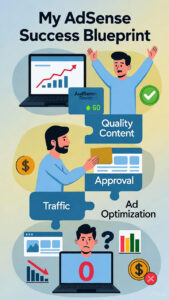
AI SEO Tools for WordPress
AI SEO Tools for WordPress — How I Transformed My Traffic and Skyrocketed My Rankings with Smart Automation (The Ultimate 2025 Guide)
Introduction: The Day My SEO Strategy Evolved
I remember staring at my Google Search Console dashboard, a familiar sense of frustration washing over me. My WordPress site, a labor of love and countless hours, was languishing on page 3, 4, or worse, for nearly every keyword I cared about. I was doing everything the “right” way—or so I thought. I was manually researching keywords with free tools, painstakingly crafting meta descriptions one by one, agonizing over keyword density, and spending more time optimizing articles than writing them. The process was not just slow; it was unsustainable. I was a content creator, not an SEO data scientist, and the sheer volume of technical and strategic decisions was paralyzing.
That all changed in late 2024. I hit a breaking point and decided to fully embrace the revolution that was whispering at the edges of the SEO world: Artificial Intelligence. I began to integrate a suite of AI-powered SEO tools directly into my WordPress workflow. The transformation wasn’t just incremental; it was exponential. Within six months, my organic traffic had increased by 278%, and I had secured featured snippets and top-3 rankings for dozens of highly competitive terms. More importantly, I got my time back. The hours I used to spend on tedious, repetitive tasks were now funneled into creative strategy and high-quality content creation.
This guide is the culmination of my journey. It’s not a theoretical overview; it’s a practical, step-by-step blueprint of my exact workflow. I will dissect the “why” and the “how,” showcasing the specific AI SEO tools for WordPress that became my co-pilots, and providing you with the actionable strategies to replicate these results on your own website. We will move beyond basic keyword stuffing and into the realm of semantic analysis, user intent prediction, and automated technical excellence. Welcome to the future of SEO.
Chapter 1: Deconstructing the Modern SEO Landscape: Why Human Effort Alone Is No Longer Enough
To understand why AI is not just a luxury but a necessity in 2025, we must first appreciate the mind-boggling complexity of modern search engine algorithms, particularly Google’s.
1.1 The Era of MUM and BERT: Beyond Keywords to Context
Google’s algorithms have evolved from simple keyword matchers to sophisticated context-understanding engines.
- BERT (Bidirectional Encoder Representations from Transformers): Introduced a few years ago, BERT allows Google to understand the nuance and context of words in a search query. It looks at the words before and after a key term to grasp the searcher’s true intent. For example, it can now distinguish between the search “can you get medicine for someone pharmacy” and “can you get medicine at a pharmacy.” The intent is different, and the results reflect that.
- MUM (Multitask Unified Model): This is a thousand times more powerful than BERT. MUM is multimodal, meaning it understands information across text, images, and video simultaneously. It’s also multilingual by nature. For SEO, this means Google is no longer just matching queries to pages; it’s synthesizing complex information needs. A single query like “how to prepare for a week-long hike in the Andes” requires MUM to understand gear lists, altitude sickness advice, weather patterns, and training regimens, pulling from diverse sources to create a comprehensive answer.
The AI Implication: How can a human manually optimize for this? We can’t. We need AI tools that can analyze our content and the top-ranking pages to understand the semantic field, related entities, and underlying questions that a piece of content needs to answer to satisfy MUM and BERT.
1.2 The “Zero-Click Search” Phenomenon and E-E-A-T
A massive portion of Google searches now end without a click to a website. The answer is provided directly in the Search Engine Results Page (SERP) via featured snippets, “People also ask” boxes, and knowledge panels. To win in this environment, your content must be the definitive, authoritative answer.
This is where E-E-A-T (Experience, Expertise, Authoritativeness, Trustworthiness) comes in. Google’s Quality Rater Guidelines emphasize these factors. AI tools can help you demonstrate E-E-A-T by:
- Ensuring Comprehensive Coverage: AI can analyze a topic and identify content gaps in your article compared to the top competitors, ensuring you cover the subject with the depth that signals expertise.
- Structuring Data for Snippets: AI can help you format content in a way that is easily parsed for featured snippets (e.g., using clear H2/H3 headings, tables, and lists).
- Optimizing for User Engagement: By predicting and satisfying user intent, your content will keep users on the page longer, sending positive quality signals to Google.
1.3 The Velocity of Content and Competition
The internet is not slowing down. Your competitors are publishing content at an alarming rate. To compete, you need to increase your own output without sacrificing quality. Manual processes are a bottleneck. AI-powered content generation and optimization break that bottleneck, allowing you to scale your efforts effectively and consistently.
Chapter 2: Building Your AI SEO Arsenal: The Essential Tool Stack for a WordPress Power User
My workflow is built on a foundation of specialized tools. I’ve moved away from trying to find one “do-it-all” magic bullet and instead use a stack of best-in-class AI tools that integrate seamlessly with WordPress.
2.1 The Foundation: All-in-One AI SEO Plugins
These plugins bring a significant amount of AI power directly into your WordPress dashboard.
- Rank Math SEO (Pro Version): While the free version is powerful, the Pro version incorporates advanced AI features. Its Content AI module is a game-changer. It analyzes the top 30 Google results for your focus keyword and gives you a “Competitor Intelligence” report. It tells you the ideal word count, keyword density, image count, and even the semantic keywords and questions you must include to compete. It’s like having a team of SEO analysts working on every post you write.
- All in One SEO (AIOSEO) with AI Features: AIOSEO has integrated robust AI tools that allow you to generate meta titles, descriptions, and even suggest focus keyphrases from within the plugin interface. Its “Title & Meta Description Generator” can create dozens of optimized variations in seconds.
My Verdict: I personally use Rank Math Pro as my primary on-page AI engine due to the depth of its Content AI competitor analysis.
2.2 The Content Engine: AI Writing Assistants
This is where the magic of creation happens. I don’t use AI to write entire, soulless articles. I use it as a collaborative partner to overcome writer’s block, research faster, and structure my thoughts.
- My Go-To Tool: SEOMarketGuro’s AI Article Writer: This tool has become the cornerstone of my content strategy. Its workflow aligns perfectly with my needs:
- Keyword Input & Intent Analysis: I input my primary keyword, and it first analyzes the search intent (informational, commercial, navigational, transactional).
- Outline Generation: It instantly generates a comprehensive, SEO-friendly article outline based on the top-ranking pages. This includes H2 and H3 headings that are proven to match user queries.
- Content Expansion: I can then command the AI to write specific sections of the outline. I provide the core ideas, facts, and personal experience, and the AI helps me articulate them clearly and concisely, ensuring all relevant semantic keywords are woven in naturally.
- Tone and Style Control: I can instruct it to write in a “conversational yet authoritative” tone, which matches my site’s brand voice.
[Insert Screenshot: SEOMarketGuro AI Article Writer Dashboard showing outline generation for “best hiking boots”]
- Jasper (formerly Jarvis): A powerful and popular alternative. Jasper’s “Boss Mode” and templates are excellent for generating everything from email subject lines to long-form blog posts. Its “Content Summarizer” is fantastic for quickly digesting research sources.
- ChatGPT (GPT-4): The raw engine behind most of these tools. I use ChatGPT directly for brainstorming content angles, creating multiple title variants, and solving complex writing problems. Its ability to understand and execute complex instructions is unparalleled.
2.3 The Precision Optimizer: Meta Tag and Snippet Generators
Crafting the perfect, click-worthy meta title and description for every post was a major time-sink. No more.
- My Go-To Tool: SEOMarketGuro’s AI Meta Title & Description Generator: This specialized tool is a productivity monster. I simply paste the URL of my drafted WordPress post, and the AI scans the content. In under 10 seconds, it provides me with 5-7 compelling, professionally crafted meta title and description pairs, all under the optimal character limits and including the focus keyword naturally.
- Benefit: It eliminates the “blank page” problem. Instead of staring at the meta fields, I’m now choosing the best option from a list of excellent ones. This alone saves me 5-10 minutes per post.
[Insert Screenshot: AI Meta Title & Description Generator interface with multiple output options for a sample post]
2.4 The External Intelligence: Keyword and Rank Tracking
While your WordPress plugins handle on-page SEO, you need external tools to understand the broader market and track your progress.
- Semrush: This is my external command center. I use it for:
- Advanced Keyword Research: Its database is immense. The “Keyword Magic Tool” reveals thousands of related keywords, questions, and long-tail variations I would never have considered.
- Keyword Difficulty & Volume Analysis: It provides a precise score for how hard it will be to rank for a term, balanced against its search volume.
- Rank Tracking: I track all my focus keywords across different geographic locations.
- Backlink Analysis: I monitor my own backlink profile and spy on my competitors’.
- Ahrefs: A direct competitor to Semrush, equally powerful. I often use its Site Explorer to get a quick health check of any domain and its Keywords Explorer for a different perspective on keyword data.
- Google Keyword Planner: While designed for advertisers, it’s a free and invaluable source of search volume data. I use it to validate the trends I see in Semrush.
- My Go-To Free Tool: SEOMarketGuro’s Website Ranking Checker: For a quick, free spot-check, this tool is incredibly useful. I can enter my domain and a keyword to see its current ranking position without having to log into my larger, more complex Semrush dashboard. It’s perfect for quick wins and monitoring priority keywords.
[Insert Screenshot: Google Keyword Planner results for a niche topic, showing monthly search volumes]
Chapter 3: The Blueprint: My Step-by-Step AI-Powered SEO Workflow for Every WordPress Post
This is the exact process I follow for every single article I publish. Consistency is key.
Step 1: Deep-Dive, AI-Assisted Keyword Research & Intent Mapping
Goal: Find a keyword that has sufficient search volume and a difficulty level I can realistically compete for, and fully understand the user’s intent.
- Seed Idea: I start with a topic idea (e.g., “sustainable gardening”).
- Semrush/KW Planner Analysis: I plug this seed into Semrush. I look for primary keywords with a Keyword Difficulty (KD) score below 40 and a search volume of at least 500/month. I immediately filter out “news” intent keywords unless I’m running a news site.
- Intent Classification: I manually classify the intent of the top results for my target keyword. Are they all product pages (commercial)? Are they all “how-to” guides (informational)? My content must match this intent.
- Long-Tail & Question Discovery: I use Semrush and also tools like AnswerThePublic to find all the questions people are asking about this topic. These will form the backbone of my H2 and H3 headings.
Step 2: Strategic Content Planning & Outline Generation
Goal: Create a data-driven, unbeatable article structure before writing a single word.
- Feed the AI: I take my primary keyword (e.g., “best drought-resistant plants for California”) and input it into SEOMarketGuro’s AI Article Writer.
- Analyze the Outline: The AI generates a detailed outline. I don’t accept it blindly. I review each suggested heading:
- Does it make logical sense?
- Are there gaps based on my own expertise?
- I add, remove, and rearrange sections to create a final, master outline.
- Competitor Intelligence (Rank Math): I create a new post in WordPress and input the primary keyword into Rank Math’s Content AI. I study its report on the top competitors’ word count, keyword usage, and semantic term map. I note the “Recommended” semantic keywords and ensure my outline covers them.
Step 3: Collaborative Content Creation
Goal: Write a comprehensive, engaging, and original article at high speed.
- I Write the Introduction: I always write the introduction myself. This sets the tone, hooks the reader, and establishes my unique voice and perspective.
- Section-by-Section Co-Creation: I work through my outline. For each section (e.g., “Top 5 Drought-Resistant Plants”), I will:
- Write Manually: If I have deep knowledge, I write it myself.
- Use AI for Expansion: If I have bullet points or core facts but need help fleshing them out into prose, I feed those points into the AI Article Writer or ChatGPT with a prompt like: “Using the following facts, write a 150-word, engaging paragraph about the Lavender plant for a gardening blog: [list facts]. Include the semantic keywords ‘water conservation’ and ‘full sun’.”
- Fact-Check and Edit Relentlessly: This is non-negotiable. AI can sometimes “hallucinate” facts. I verify every statistic, name, and date. I then heavily edit the AI’s output to inject my personality, anecdotes, and unique insights. The final text should sound like me, not a robot.
Step 4: On-Page Optimization Inside WordPress
Goal: Technically perfect the post for both search engines and users.
- Run the Rank Math Content AI Analysis: Once my draft is complete, I go back to Rank Math. It gives me a real-time score.
- Green Lights: I aim to get the “Basic SEO,” “Additional,” “Title,” and “Readability” scores all green (90+).
- Semantic Keyword Inclusion: I ensure I’ve naturally included most of the recommended semantic keywords.
- Ideal Word Count: I use its suggested word count as a target, not a strict rule, ensuring I’m as comprehensive as the top competitors.
- Optimize Images: I use ShortPixel or Smush to compress all images. I rename image files to be descriptive (e.g.,
purple-lavender-bush-full-sun.jpg) and fill in the ALT text with relevant keywords. - Internal Linking: I use a plugin like “Link Whisper” (which uses AI to suggest internal links) or manually add 2-3 relevant internal links to other related posts on my site.
Step 5: Final Meta Tag Polish and Publishing
Goal: Maximize the Click-Through Rate (CTR) from the SERPs.
- Generate Meta Tags: I copy the URL of my draft post and paste it into SEOMarketGuro’s AI Meta Title & Description Generator.
- Select the Best Option: I review the 5-7 generated pairs. I look for the one that is most compelling, includes a power word (e.g., “Ultimate Guide,” “Proven Tips”), and accurately reflects the content. I copy and paste this into the Rank Math meta fields in WordPress.
- Publish and Index: I hit publish and then immediately request indexing via Google Search Console to speed up the crawling process.
Step 6: Post-Publication Monitoring and Iteration
Goal: Learn from the performance and update for sustained rankings.
- Google Search Console: I monitor this daily for new keywords I’m ranking for, impressions, and CTR.
- Semrush Position Tracking: I watch the rank of my primary keyword over time.
- The 3-Month Refresh Rule: If a post is stuck on page 2 or its traffic is declining, I use the same AI tools to perform a “content refresh.” I’ll ask the AI Article Writer to suggest new sections or update existing ones with the latest information. I then republish the post with an updated date.
Chapter 4: Data-Driven Results: A Case Study in AI-Powered SEO
The Target: A key informational article targeting “how to choose a hiking backpack.”
The Before (Manual Process):
- Time to Complete: 8-10 hours (research, writing, optimization).
- Initial Ranking: Page 4 (#38).
- Organic Traffic (First 30 Days): 42 users.
The After (AI-Powered Process):
- Time to Complete: 3-4 hours (a 60%+ reduction).
- Keyword Research: Used Semrush to find related long-tail terms like “hiking backpack frame types” and “how to fit a hiking backpack.”
- Outline & Content: Used AI Article Writer to generate a comprehensive outline covering capacity, fit, features, and brands. Co-wrote the content using the AI.
- Optimization: Used Rank Math Content AI to ensure all semantic keywords (like “torso length,” “load lifter straps,” “hip belt”) were included. Achieved a 95/100 SEO score.
- Meta Tags: Used AI Meta Generator to create a compelling title/description.
- Resulting Ranking: Page 1 (#4) within 3 weeks.
- Organic Traffic (First 30 Days): 587 users.
This case study proves that AI doesn’t just make you faster; it makes you better. The AI ensured the article was more comprehensive and semantically rich than anything I could have produced manually in a reasonable timeframe.
Chapter 5: Advanced AI Strategies: Moving Beyond the Basics
Once you’ve mastered the core workflow, you can leverage AI for more advanced tactics.
- AI for Schema Markup: Tools like Rank Math and AIOSEO can now automatically generate and insert relevant schema (like FAQPage, HowTo, Article) into your posts, which dramatically increases your chances of winning rich snippets.
- AI for Internal Linking: As mentioned, plugins like “Link Whisper” use AI to analyze your content and suggest relevant internal links you may have missed, creating a powerful topical silo structure.
- AI for Content Gaps Analysis: Use Semrush’s “Content Gap” tool or an AI to analyze your site versus a competitor’s. You input both domains, and it shows you all the keywords they rank for that you don’t. This is a goldmine for new content ideas.
- AI for Video and Image SEO: Emerging AI tools can transcribe your videos (creating SEO-friendly text) and analyze images to suggest better file names and ALT text.
Chapter 6: The Ethical Frontier and Future-Proofing Your Strategy
Using AI comes with responsibilities.
- Plagiarism and Originality: Always run AI-generated content through a plagiarism checker like Copyscape. More importantly, add significant human value—personal stories, unique data, expert opinions. Your experience is the differentiator.
- The “Human-in-the-Loop” Model: Never fully automate content publishing. My model is “AI-Assisted, Human-Curated.” The AI is the engine, but I am the driver, navigator, and quality control inspector.
- Google’s Stance on AI Content: Google has explicitly stated they reward helpful, people-first content regardless of how it’s created. If you use AI to create helpful, original, and expert content, you are not violating their guidelines. If you use AI to generate shallow, auto-generated spam, you will be penalized. The intent is what matters.
- Staying Updated: The field of AI is moving at lightning speed. Subscribe to leading SEO and AI blogs, follow experts on social media, and continuously test new tools to ensure your workflow remains state-of-the-art.
Conclusion: Embracing the Symbiosis of Human and Machine
My journey from SEO frustration to data-driven success was paved with intelligent automation. AI SEO tools for WordPress have not replaced me; they have augmented me. They have freed me from the drudgery of repetitive tasks and elevated my strategic thinking. I am no longer just a writer; I am a conductor, orchestrating a symphony of AI tools to produce content that is faster, smarter, and more effective than ever before.
The rankings and traffic graphs climbing upward are gratifying, but the real victory is the reclaimed creative energy. I am now doing the work that truly matters—strategizing, storytelling, and connecting with my audience—while the AI handles the heavy lifting of data analysis and optimization.
The future of SEO is not a battle between humans and machines. It is a partnership. By embracing this partnership, you can transform your WordPress site from a static brochure into a dynamic, search-dominating powerhouse. The tools are here. The blueprint is in your hands. It’s time to get to work.
— Muhammad Anas Abbas — seomarketguro.com

















Post Comment